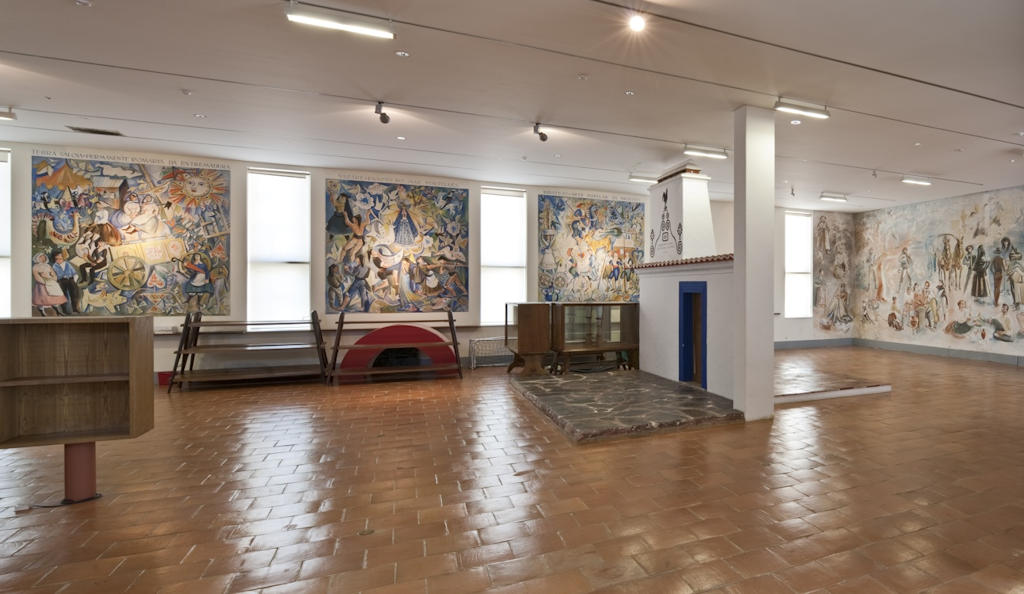The building in
Belém that houses the museum was originally designed by architects Veloso Reis Camelo and João Simões as the pavilion for the Popular Life Section of the Portuguese World Exhibition in 1940. In 1942, architect Veloso Reis Camelo, under the direction of ethnographer Francisco Lage, developed the first adaptation project to transform the building into a museum. However, it was only three years later that the transformation began with a new project by Jorge Segurado, accompanied by a team of decorator-painters composed of Carlos Botelho, Eduardo Anahory, Estrela Faria, Manuel Lapa, Paulo Ferreira, and Thomaz de Mello. The current decorative elements on the building's exterior, such as wall decorations and statuary, were created by artists Barata Feyo, Henrique Moreira, Júlio de Sousa, and Adelina de Oliveira.
The Museu de Arte Popular was inaugurated on July 15, 1948. It houses permanent exhibition rooms as well as spaces for temporary exhibitions, organized into five rooms representing five regions of Portugal: Entre-Douro-e-Minho, Trás-os-Montes, Algarve, Beiras, and Alentejo-Estremadura. A significant portion of the initial collection came from ethnographic materials gathered in the decades preceding the museum's opening, which were previously exhibited in Portugal and abroad under the organization of S.P.N./S.N.I.
The Museu de Arte Popular underwent extensive restoration work in 2010 to address its advanced state of decay. Since 2012, it has been under the responsibility of the Museum of Ethnology. At one point, it was considered as one of the cultural institutions to be integrated into the Belém-Ajuda cultural management project.
The current collection encompasses a wide range of objects, including agricultural tools, ceramics, basketry, traditional costumes, musical instruments, jewelry, paintings, and sculptures. Together, these artifacts provide a vivid representation of the diversity found throughout Portugal's various regions, from ceramic roosters and cangas from Minho to basketry from Trás-os-Montes, and from pottery bells and tableware from Alentejo to fishing equipment from the Algarve.



